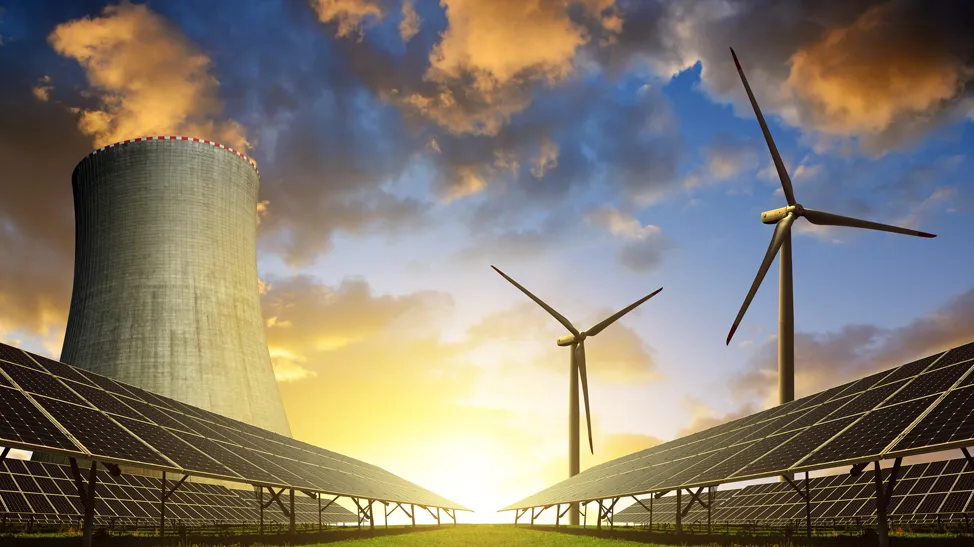In the pursuit of a sustainable and diverse energy landscape, it’s crucial to delve deeply into a spectrum of power generation methods. This blog post comprehensively explores traditional options like fossil fuels and generators, environmentally friendly alternatives such as solar and wind, and the complex world of nuclear systems. Each option comes with its unique benefits, challenges, and socio-economic implications, shaping the energy landscape we navigate today.
Traditional Options: Fossil Fuels and Generators
Traditional power generation often relies on fossil fuels like coal, oil, and natural gas, contributing to approximately 60% of the U.S. electricity mix. This significant reliance stems from the historical availability and affordability of these resources. Challenges include the environmental impact—greenhouse gas emissions contribute to climate change, air pollution, and resource depletion. The U.S. aims to reduce its dependence on these sources, with initiatives focusing on transitioning to cleaner alternatives.
Generators, though portable and versatile, are typically fueled by gasoline or diesel. They provide essential backup power during outages but come with challenges such as ongoing fuel investment, making them less sustainable in the long run. In remote areas or during emergencies, generators play a crucial role, but their environmental footprint and dependence on fossil fuels necessitate alternative solutions.
Green Options: Solar and Wind
Solar power, harnessing sunlight through photovoltaic cells, constitutes around 3% of U.S. electricity. The intermittent nature of solar energy production presents challenges, requiring efficient energy storage solutions for consistent power supply. Initial capital investment remains a hurdle, although advancements in technology are gradually lowering costs. In Europe, solar power accounts for a more significant portion, approximately 10% of total electricity generation. Governments and businesses invest heavily in solar infrastructure, driven by environmental goals and a desire to diversify energy sources.
Wind power, contributing to about 10% of U.S. electricity, faces challenges such as visual and noise impacts, wildlife concerns, and specific geographic requirements. However, in Europe, wind energy has seen broader acceptance, with some countries surpassing 20% wind energy in their grids. Offshore wind farms, in particular, offer vast potential for clean energy generation. Technological advancements, along with community engagement, are critical in overcoming these challenges and fully realizing the potential of wind power.
Nuclear Systems
Nuclear power, providing around 20% of U.S. electricity, is a low-carbon option with substantial energy output. Nuclear reactors operate by initiating controlled nuclear reactions that release heat, subsequently used to generate steam for turbines. The U.S. supports the development of advanced nuclear reactors to enhance safety, efficiency, and waste reduction. Challenges include radioactive waste disposal, potential accidents (as witnessed in historical incidents like Chernobyl and Fukushima), and public perception concerns regarding safety.
In Europe, nuclear power plays a significant role, contributing around 25% of the electricity mix. The capital needed for nuclear projects is high due to stringent safety measures, complex regulatory frameworks, and the extensive construction period. Advancements in small modular reactors (SMRs) and next-generation technologies aim to address these challenges, providing more scalable and adaptable nuclear solutions for the future.
New Developments and Future Technologies
Future power generation is poised for innovation, with ongoing developments and emerging technologies shaping the landscape. Advanced nuclear reactors, under research and development, promise improved safety and waste reduction. Energy storage technologies, such as advanced batteries, address intermittency challenges in renewables, enabling a more stable grid. Smart grids enhance efficiency and reliability, optimizing power distribution and incorporating real-time data for improved decision-making.
Bioenergy, tidal power, and geothermal systems are gaining attention as additional sustainable alternatives. Bioenergy involves harnessing energy from organic materials, offering a renewable solution with reduced environmental impact. Tidal power utilizes the energy of tides to generate electricity, a predictable and constant energy source. Geothermal systems tap into the Earth’s internal heat, providing a continuous and reliable energy supply. While each contributes a small share to the energy mix, advancements and increased adoption can amplify their impact.
The development of fusion power, replicating the sun’s energy production, remains in the experimental stage. If successfully realized, fusion power could revolutionize the energy landscape by providing abundant, clean, and virtually limitless energy. However, significant technical challenges and high capital investment currently limit its practical application.
Conclusion
As we navigate the evolving energy terrain, embracing a mix of traditional and green options is vital. Balancing effectiveness, environmental impact, and public concerns, while staying attuned to emerging technologies, will shape a resilient and sustainable energy future. The ongoing quest for innovation propels us toward cleaner, more efficient, and diversified power generation methods, ensuring a dynamic and adaptive approach to our global energy needs.

